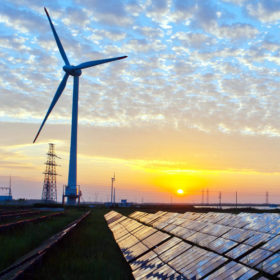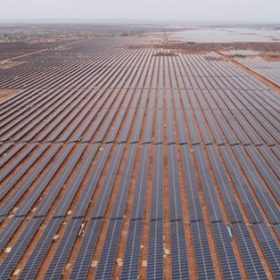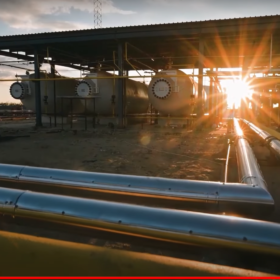Single-axis bifacial PV offers lowest LCOE in 93.1% of world’s land area
Researchers from the Solar Energy Research Institute of Singapore have concluded that utility-scale PV projects relying on bifacial panels and single-axis trackers deliver the lowest levelized cost of energy in most of the world. They found that the combination of bifacial products with dual-axis trackers is still too expensive, despite the higher yield. The second-lowest LCOE is offered by monofacial single-axis tracker plants.
Tata Power to set up superfast EV chargers at MG Motor outlets
The 50KW DC chargers will be accessible by both MG ZS electric vehicle (EV) customers as well as other EV owners whose automobiles are compatible with the CCS/CHAdeMO charging standards.
Denmark and India sign MoU on green energy transition
The new Indo-Danish cooperation will prepare the Indian energy system for the integration of 450 GW renewable energy by 2030. It will focus on knowledge exchange in areas such as energy planning and scenario modelling, integration of high share of renewable energy, power system flexibility and electricity markets.
The long read: New fuels, new powers
The energy transition will change the geopolitical landscape, which has hitherto observed closely who controls the production and trade of hydrocarbons. The current ambition to find alternative sources of power has given impetus to a growing academic community to determine the probable geopolitical outcome of the energy transition. Renewables do not mutually share most of the unique features of fossil fuels, which translate into power political effects. So how should we understand the world of tomorrow?
Solar manufacturers in SEZs say customs duty will be counterproductive
Module manufacturers in special economic zones would be at a disadvantage when selling in the domestic market as they would be required to pay basic customs duty on the value of solar modules.
India’s IPLTech to use Faradion sodium-ion batteries for commercial vehicles
The Gurgaon-based data-driven fleet service provider—which launched India’s first all-electric heavy-duty truck last year—will use Faradion’s sodium-ion batteries in its commercial vehicles.
Indian Railways to set up 3 GW solar plants on vacant land
The projects—to be developed in three phases of 1 GW each—are expected to be completed by year 2022-23. While the first and the third phases will be developed under public-private partnership basis, the second phase will be on the ownership model of REMCL and eligible for capital subsidy under the CPSE scheme.
Solar costs have fallen 82% since 2010
The levelized cost of energy generated by large scale solar plants is around $0.068/kWh, compared to $0.378 ten years ago and the price fell 13.1% between 2018 and last year alone, according to figures released by the International Renewable Energy Agency.
Bridge To India lowers renewable outlook for 2020-24
The Indian renewable energy market is poised for a significant contraction during the five-year period due to weakening power demand growth, deteriorating financial condition of Discoms and further constraints in debt financing.
The EV story in post-Covid India
The near-term outlook for electric vehicles (EVs) remains bleak owing to supply and demand headwinds coupled with the expectation of sluggish investment to scale up the support ecosystem.














